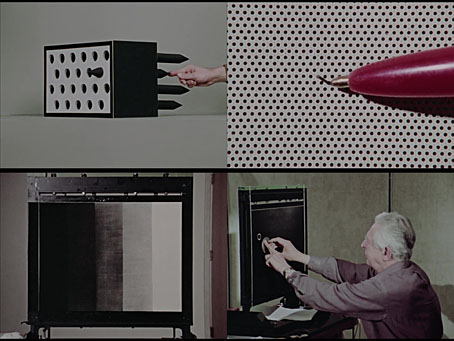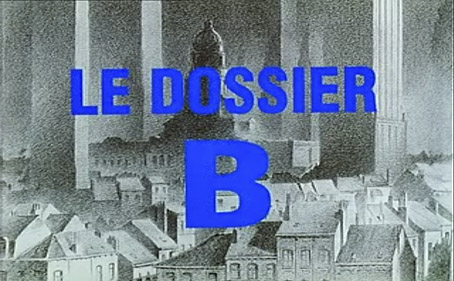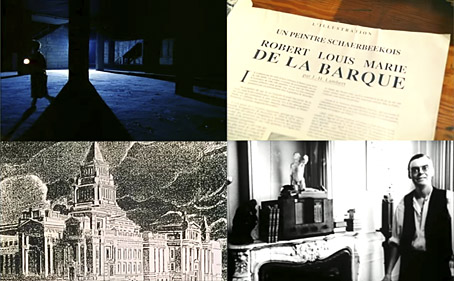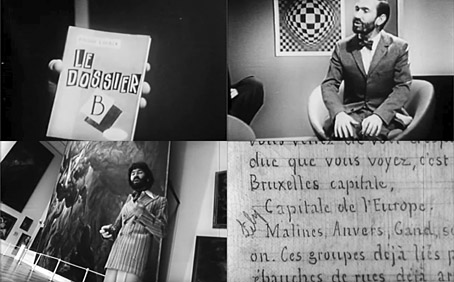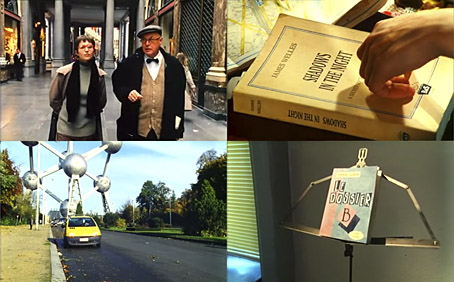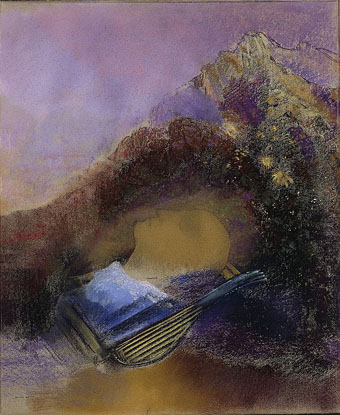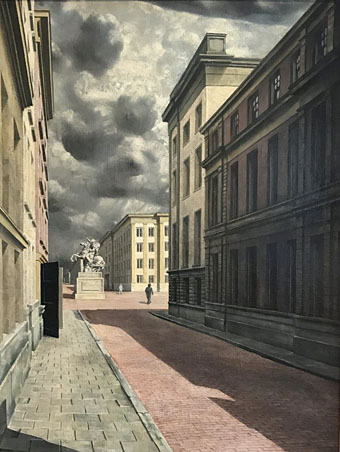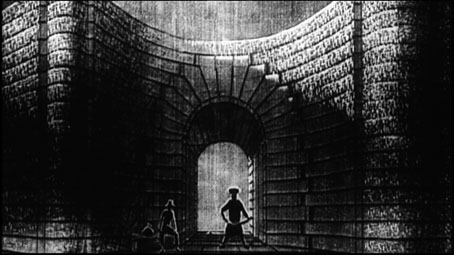
Before the Law (1962).
The animated films of Alexandre Alexeieff and Claire Parker have been featured here on several occasions even though they remain hard to find. I linked to a YouTube collection a few years ago but—typically for YT rarities—it’s no longer available. One example that many people will have seen is Before the Law, the short prologue and film-within-the-film that appears in Orson Welles’ adaptation of Kafka’s The Trial. Before the Law, like all the Alexeieff and Parker films, was produced with the pinscreen, a unique piece of animation technology invented by the couple. The pinscreen’s white board contains thousands of tiny pins whose angled shadows can be manipulated by pushing the pins in or out to create sharp lines or subtle monochrome shades.
The pinscreen technique is almost always mentioned when Alexeieff and Parker’s work is being discussed but the structure and operation of the board hasn’t always been very clear. For a long time I thought that “pinscreen” was merely a useful name, and that the pins must be more like nails, rather like those desktop toys that mould your face or hand. This film from 1972, The Alexeieff-Parker Pin Screen [sic], opens with a detailed description of the device, immediately confirming that, yes, those really are thousands of tiny black pins set into a board. The documentary was made for the National Film Board of Canada by another great animator, Norman McLaren, who can be seen hovering in the background from time to time. McLaren and the NFB wanted to record Alexeieff and Parker discussing the pinscreen and its operation so a tutorial might be preserved for future animators.
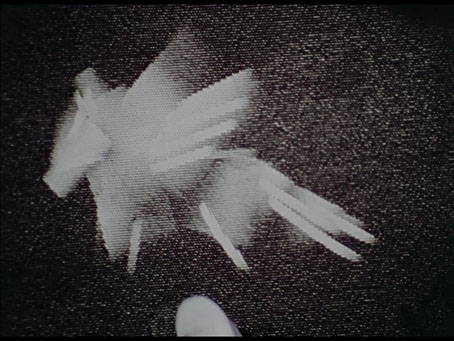
The pair are seen introducing a smaller version of their original pinscreen to a group of would-be users, a board containing 240,000 pins; the screen used to create Before the Law was four times the size with over a million pins. The operation of the device seems slow and cumbersome at first, especially when great care has to be taken to draw lines or shapes by raising or lowering the pins without damaging them at all. But having a surface that was both static yet manipulable must have offered advantages over more traditional animation methods using paint or charcoal. The most surprising detail for me was seeing Alexeieff and Parker working on both sides of the screen, with Alexeieff pushing in the pins to create light areas and Parker pushing them out again to return the area to its original black. The documentary ends with a short sequence showing animation experiments made by the students.
I said earlier that Alexeieff and Parker’s films can be hard to find but there was a DVD collection released a few years ago which I recall trying to order from some French website that wouldn’t co-operate. I thought it might be thoroughly unavailable by now but copies are still on sale at the very reliable Re:voir so I’ve just ordered one. For a taste of Alexeieff and Parker’s prowess with this kind of animation there’s En Passant (1944), two miraculous minutes illustrating a French-Canadian folk song.
Previously on { feuilleton }
• The pinscreen works of Alexandre Alexeieff & Claire Parker
• The Nose, a film by Alexandre Alexeieff & Claire Parker
• Alexandre Alexeieff and Claire Parker

